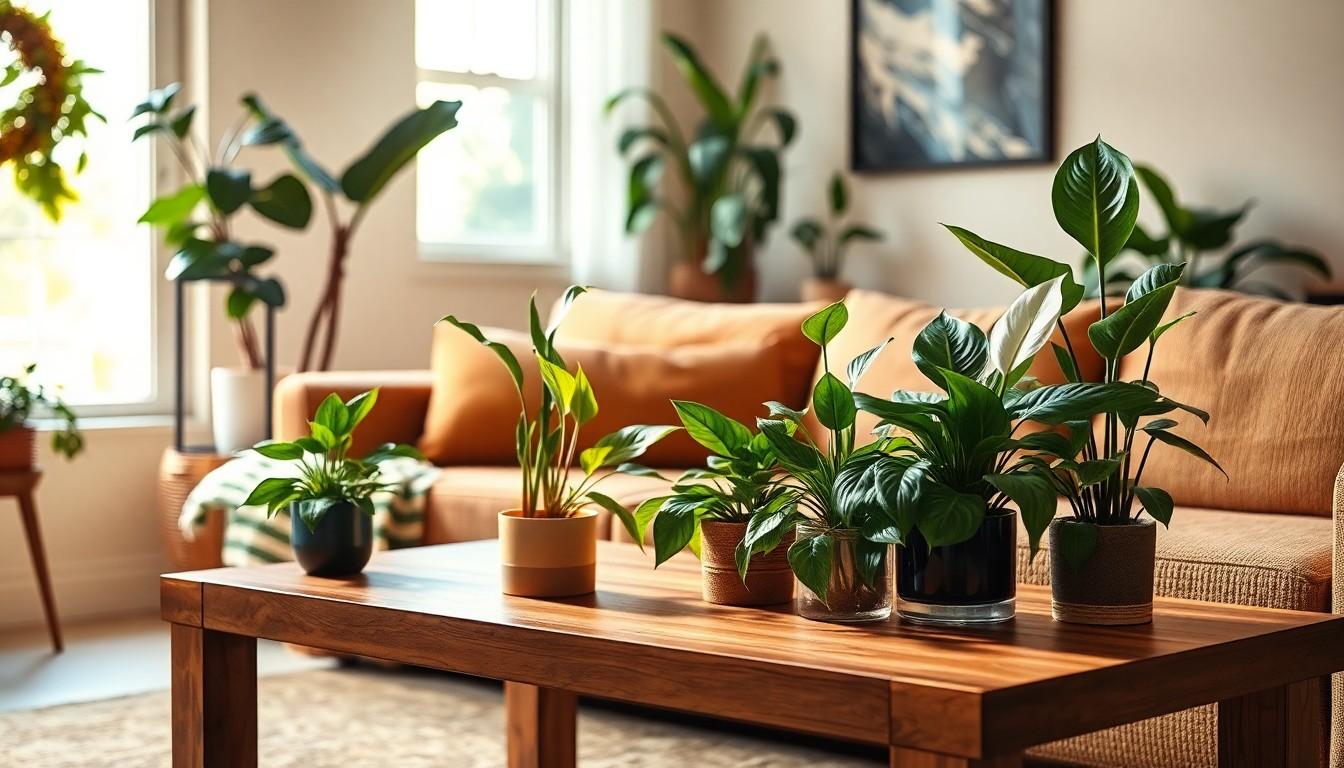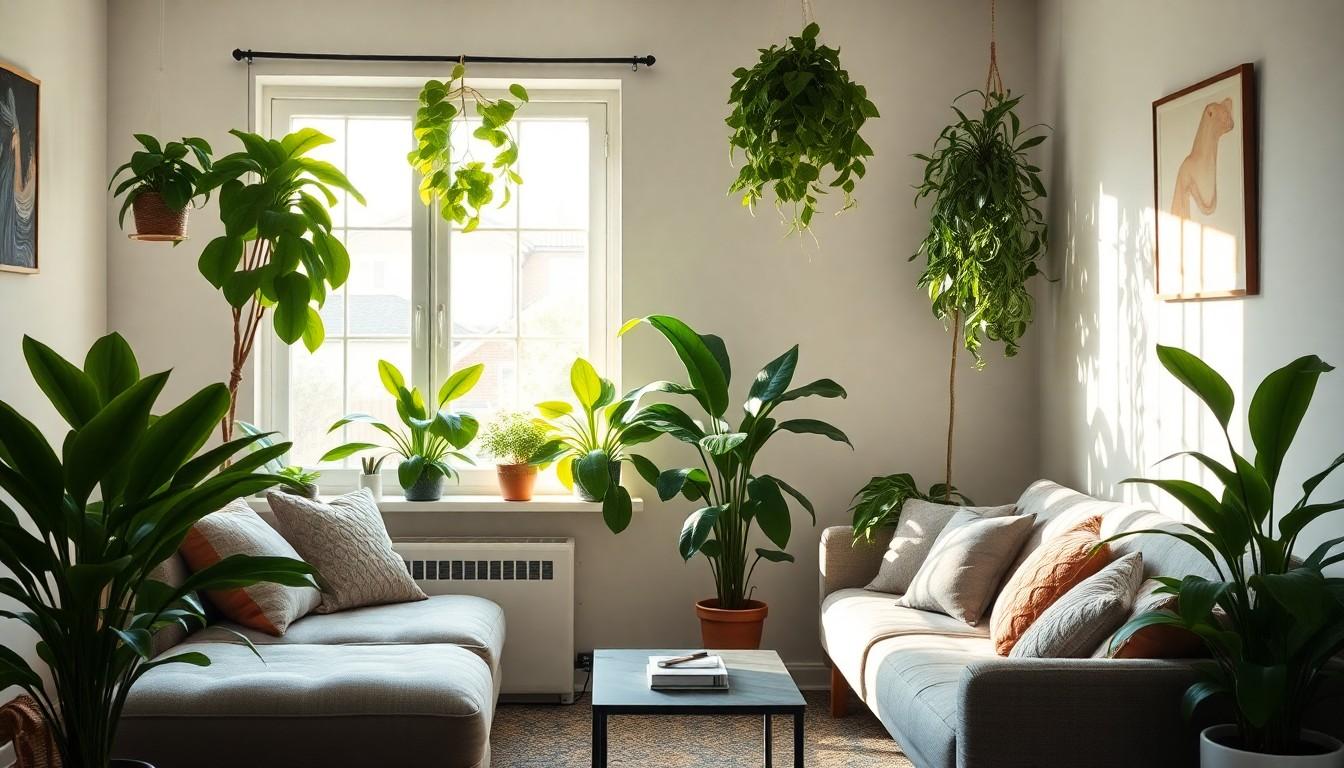Phone:
(701)814-6992
Physical address:
6296 Donnelly Plaza
Ratkeville, Bahamas.

Imagine a world where your home is a lush oasis, yet you never have to worry about finding the perfect sunbeam. For those who can’t seem to keep their plants alive, fear not! There are plenty of house plants that thrive in low light, proving that even the sunniest of personalities can survive without constant attention.
House plants that thrive in low light conditions offer numerous benefits for indoor environments. These plants not only enhance aesthetics but also improve air quality. Popular options include the snake plant, pothos, and ZZ plant, all requiring minimal sunlight.
Snake plants feature tall, architectural leaves that adapt to various light levels. Pothos have trailing vines that add a lively touch to any space. ZZ plants possess glossy foliage and tolerate neglect, making them ideal for busy individuals.
Peace lilies also deserve attention for their beautiful white blooms and resilience in low light. Spider plants act as effective air purifiers while producing offshoots, or “pups,” for propagation. Cast iron plants make a strong statement, showcasing durability against environmental challenges.
Lighting conditions play a vital role in plant health. Low light doesn’t mean no light; indirect sunlight or fluorescent lighting suffices. Observing how plants respond to their environment helps better understand their needs.
Regular watering remains essential, even for low-light plants. Overwatering poses a common risk; allowing the soil to dry between waterings promotes root health. Fertilization should occur sparingly during the growing season, as excessive nutrients can harm these plants.
Selecting the right pots contributes to successful plant growth. Ensure containers have drainage holes to prevent water retention. Choose potting soil containing organic elements that provide necessary drainage and aeration.
Overall, a variety of house plants exist that tolerate low light, allowing anyone to enjoy greenery without excessive effort. With careful selection and minimal maintenance, indoor spaces can flourish with life and vibrancy.

Low-light house plants provide numerous advantages, making them ideal for various home environments. These plants not only enhance home decor but also contribute positively to health and well-being.
Air purification stands out as a significant benefit of low-light house plants. Plants like snake plants and peace lilies effectively remove toxins such as formaldehyde and benzene from the air. Improved air quality leads to a healthier living space. Specific studies show that indoor plants can increase humidity levels, which in turn reduces respiratory problems. Incorporating just a few low-light plants in a room boosts oxygen levels, creating a fresher atmosphere.
Stress relief is another crucial advantage of low-light house plants. Interacting with greenery has a calming effect on individuals, reducing feelings of anxiety. Studies indicate that simply being around plants can lower blood pressure and enhance mood. Plants like ZZ plants and pothos require minimal care, allowing individuals to enjoy nature without added pressure. Adding low-light plants to the home fosters a sense of tranquility and connection to nature, improving overall mental well-being.
Low-light house plants provide an excellent solution for those seeking greenery in dim spaces. Several options thrive without direct sunlight and bring numerous benefits.

Snake plants, also known as Sansevieria, excel in low light and require minimal care. Their upright leaves come in various colors, adding visual interest. Tolerating neglect, these plants thrive in dry soil, allowing for infrequent watering. Snake plants actively purify air by removing toxins, creating a healthier environment. Growing them indoors enhances air quality and aesthetics.
Pothos, often referred to as devil’s ivy, showcases attractive trailing vines that adapt to low-light conditions. This plant thrives in a variety of pots and can grow in water or soil. Regular pruning encourages bushier growth and prevents long, leggy vines. Pothos perform well in low humidity, making them ideal for apartments. Positioned on shelves or hanging planters, they bring beauty to any space.
ZZ plants, also known as Zamioculcas zamiifolia, endure low-light environments and infrequent watering. Glossy leaves provide a striking appearance in any room. Its remarkable ability to survive with minimal care suits busy lifestyles. ZZ plants are drought-tolerant, flourishing with neglect. Placing them in a corner or near areas with indirect sunlight enhances any indoor area.
Cast iron plants thrive under a variety of conditions, including low light, making them nearly indestructible. They display lush, dark green leaves that add depth to indoor spaces. This plant tolerates neglect, responding well to inconsistent watering and temperature changes. Cast iron plants perform admirably in shaded areas or less-than-ideal conditions. Their durability ensures longevity in homes without frequent maintenance.
Low-light plants thrive with minimal care. Providing the right conditions ensures vibrant growth.
Watering practices change based on the plant species. Most low-light plants prefer to dry out slightly between waterings. Checking the top inch of soil helps determine moisture levels. Overwatering often leads to root rot, so making sure the pot has proper drainage is crucial. Snake plants and ZZ plants require even less water, as they store moisture in their leaves. Sticking to a consistent watering schedule, like every two weeks, typically works well for these plants.
Using the right soil type supports healthy growth. A well-draining potting mix is essential for low-light plants. Look for mixes formulated with peat, perlite, or vermiculite, as these ingredients improve drainage. Succulent or cactus mixes also work well, especially for plants like snake plants. Additionally, ensuring the pot has drainage holes prevents excess moisture buildup and promotes root health. Testing different soil types can help identify the best fit for each plant’s specific needs.
Fertilization plays a significant role in plant health. Low-light plants require less frequent feeding, typically during the growing season. Applying a balanced liquid fertilizer every four to six weeks offers sufficient nutrients. Diluting the fertilizer to half strength prevents root burn. During the dormant winter months, reducing fertilization can promote stronger growth in spring. Monitoring the plant’s response to fertilizer helps determine if adjustments are necessary for optimal health.